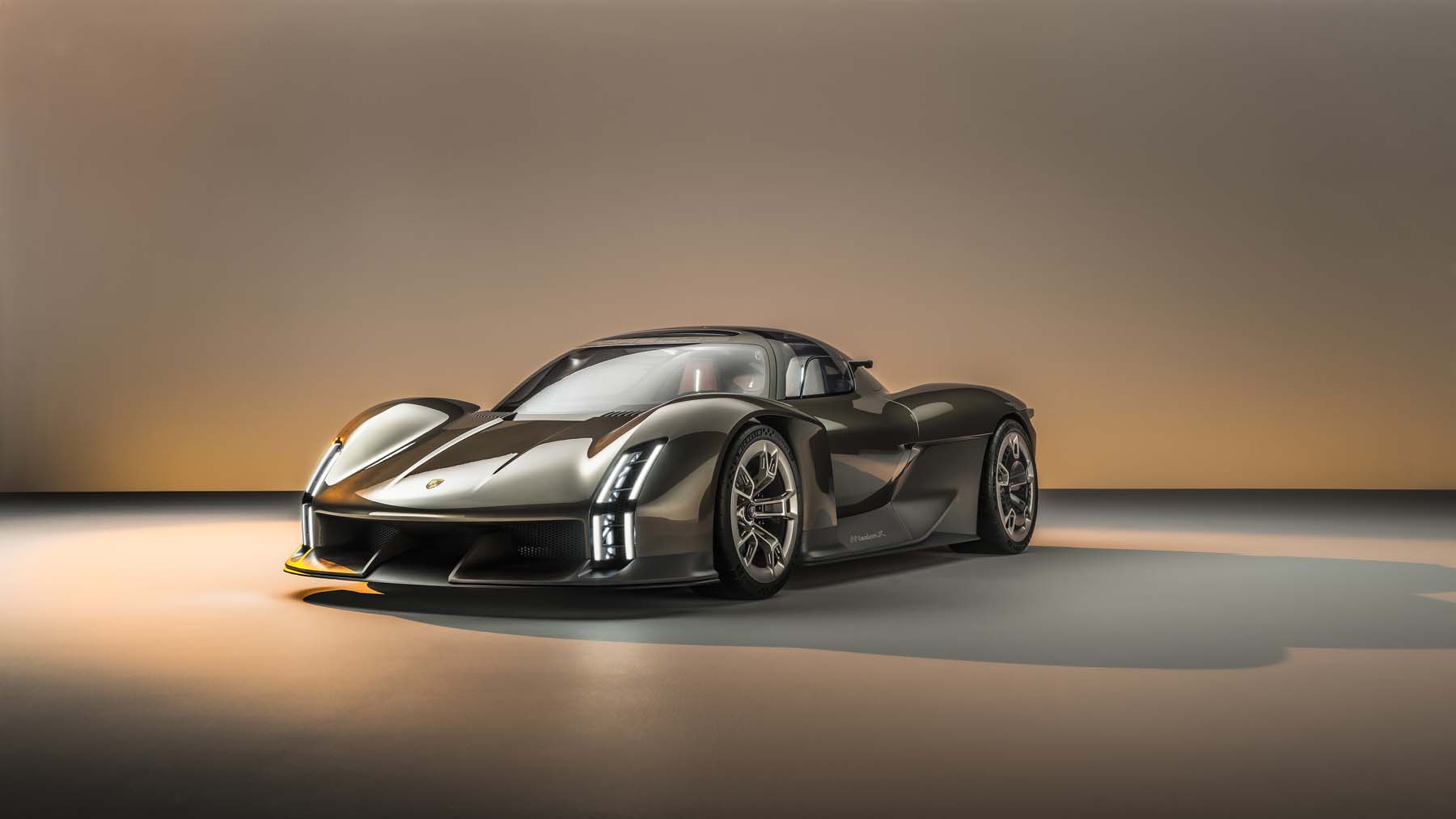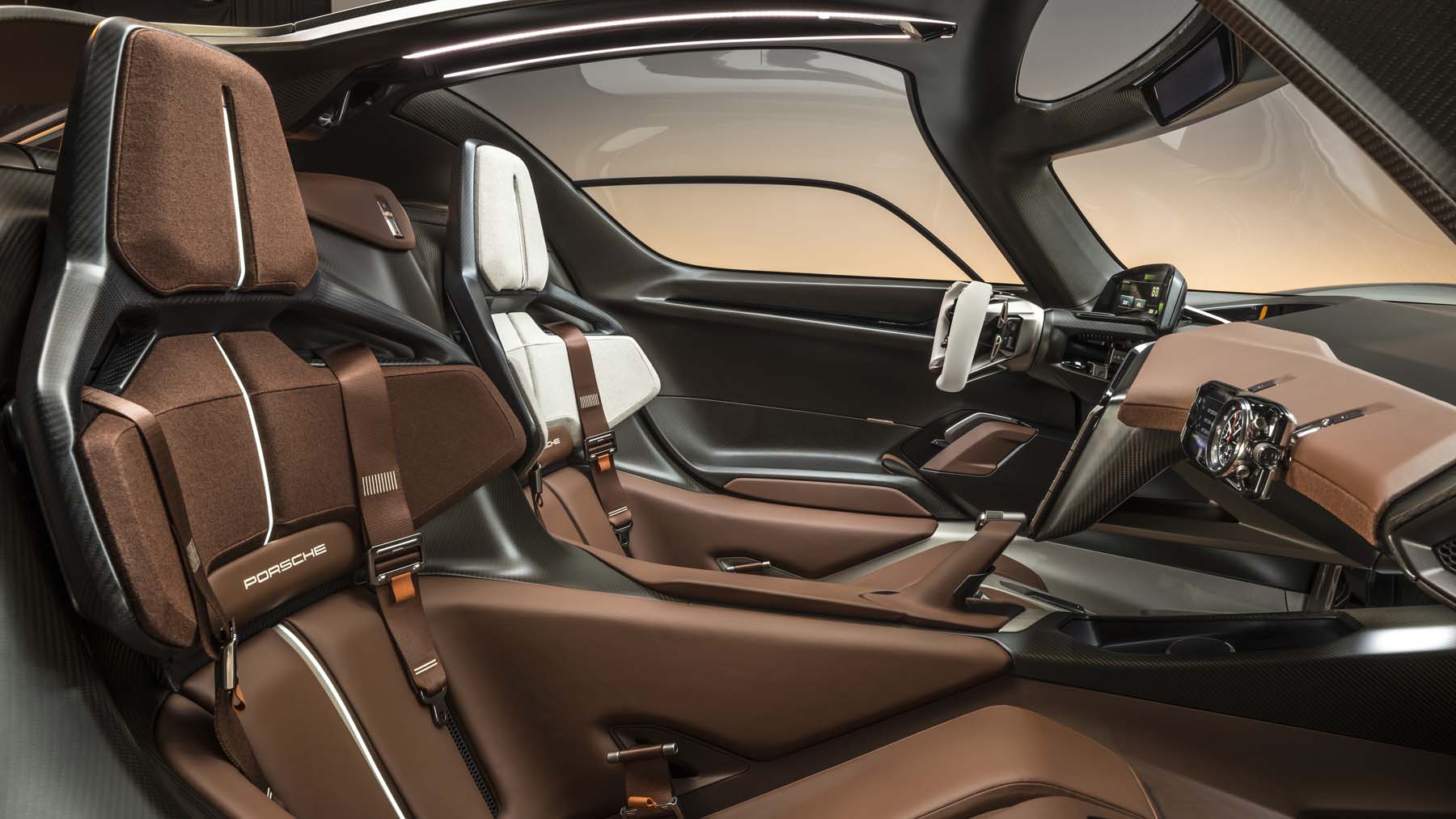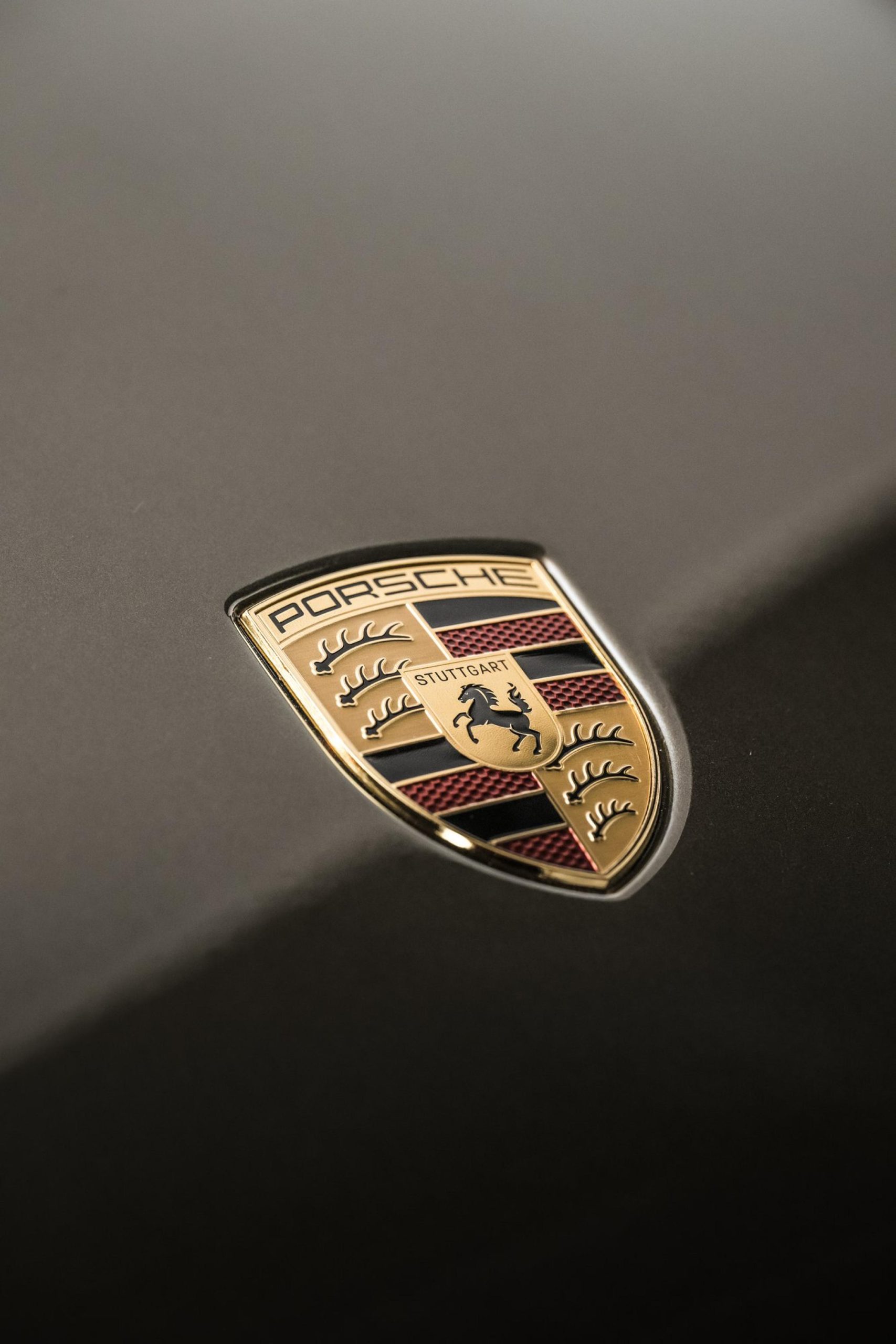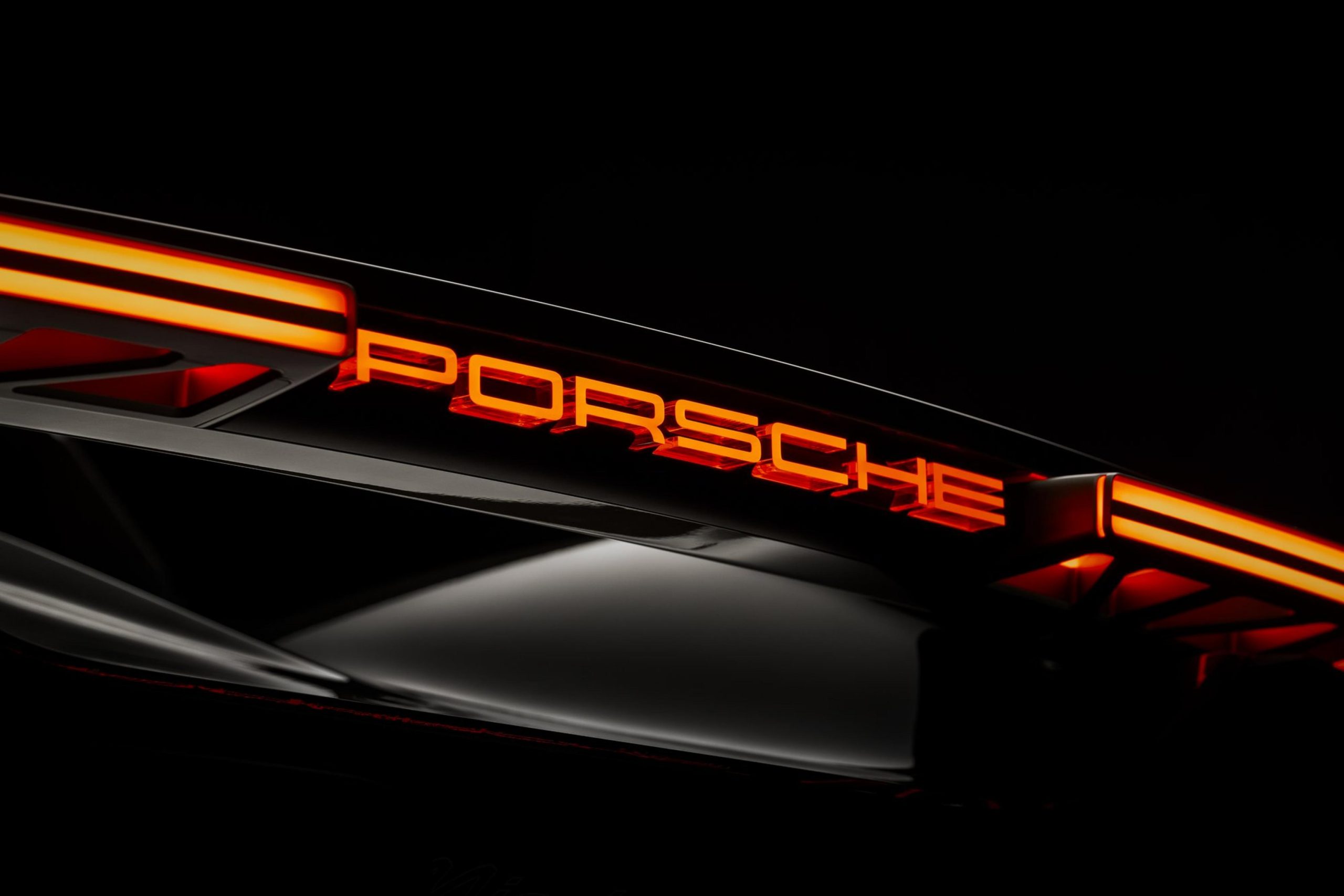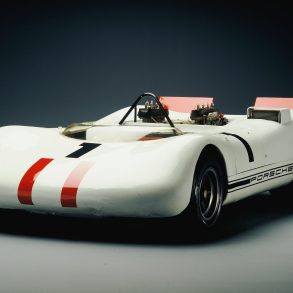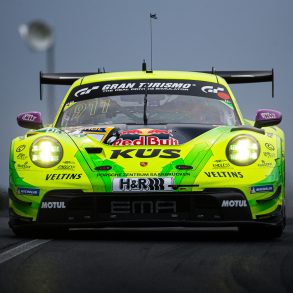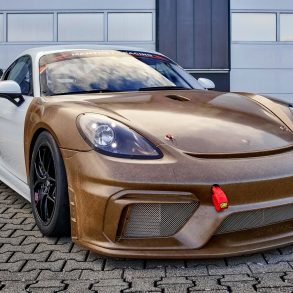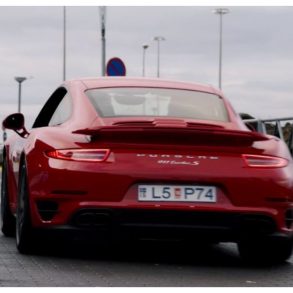A Brief History Of Electric Performance At Porsche
Porsche, ever since the first 356 rolled out of the factory doors 75 years ago, has always sought to push the boundaries of what is possible in automotive engineering. They were told time and again that placing the engine beyond the back wheels in a sports car would never work, and yet today the 911 is considered to be one of the finest sports cars money can buy. They were told that attaching a turbocharger to the flat six engine from a 911 and sending it racing was a fool’s errand, and yet the Porsche 935 won its class at Le Mans.
Innovation, evolution, the trickle down effect from motorsports, and adapting to the times has always been at the core of Porsche’s engineering excellence. They were at the forefront of the performance hybrid revolution with the 918 Spyder, which formed one piece of the Holy Trinity of Hypercars in the early 2010s. Immediately after, they announced the first Mission concept, cars that are all-electric and were engineering, design, and technology studies for possible future road cars.
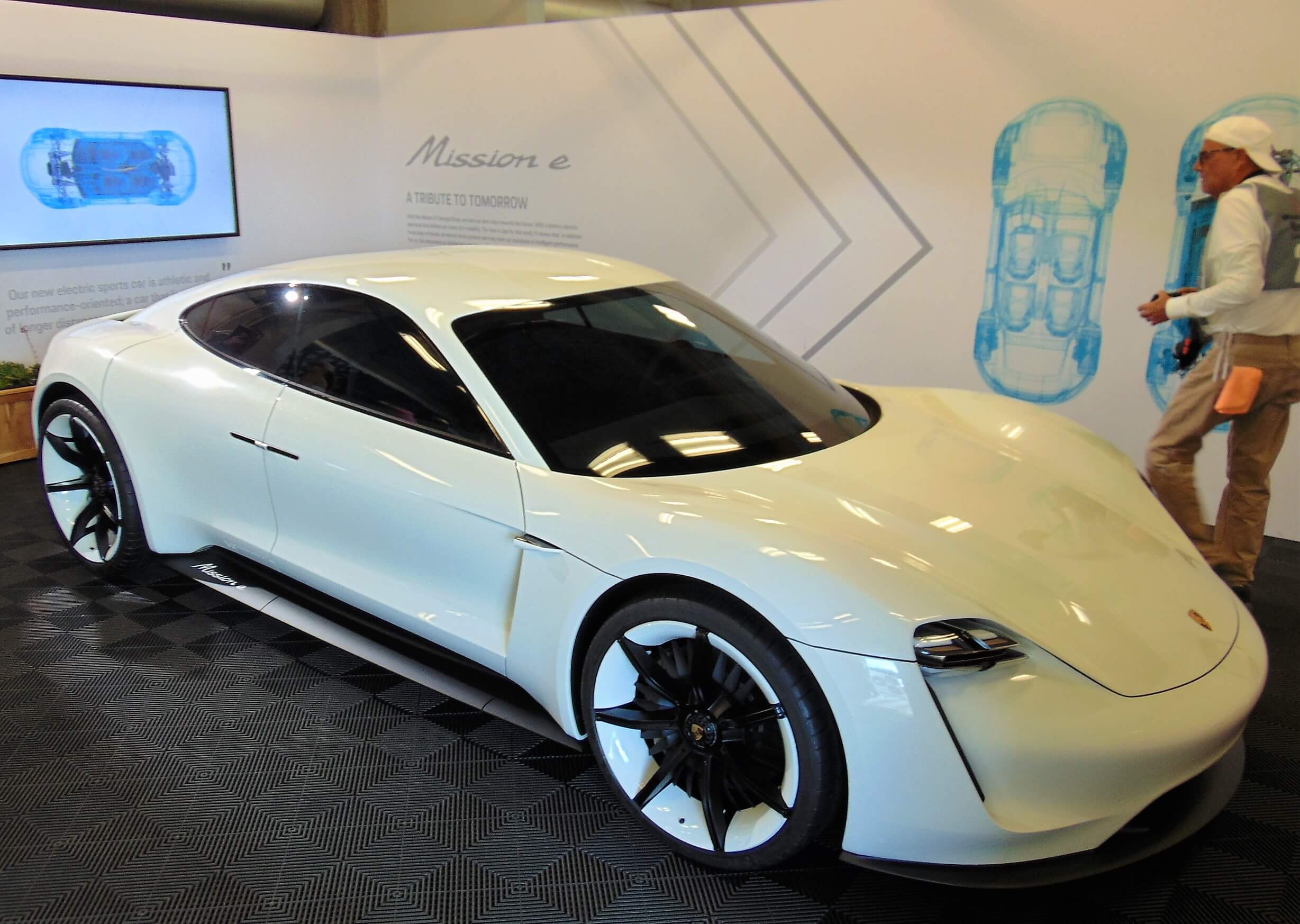
The first of those cars, the Mission E Concept, would eventually come to the road as the Porsche Taycan, one of the most popular electric sports cars on the road. It has proven so popular that it has outsold the 911 two years in a row and is well on its way to doing so again in 2023. Just two years after the Taycan’s impact on the world in 2019, the Mission R Concept was announced, a GT3-style all-electric race car. As Porsche’s 911 GT3 R, 911 Cup, and 911 RSR race cars are some of the most dominant and popular in GT racing, the Mission R was styled to look like a 911, but that was about the only similarity.
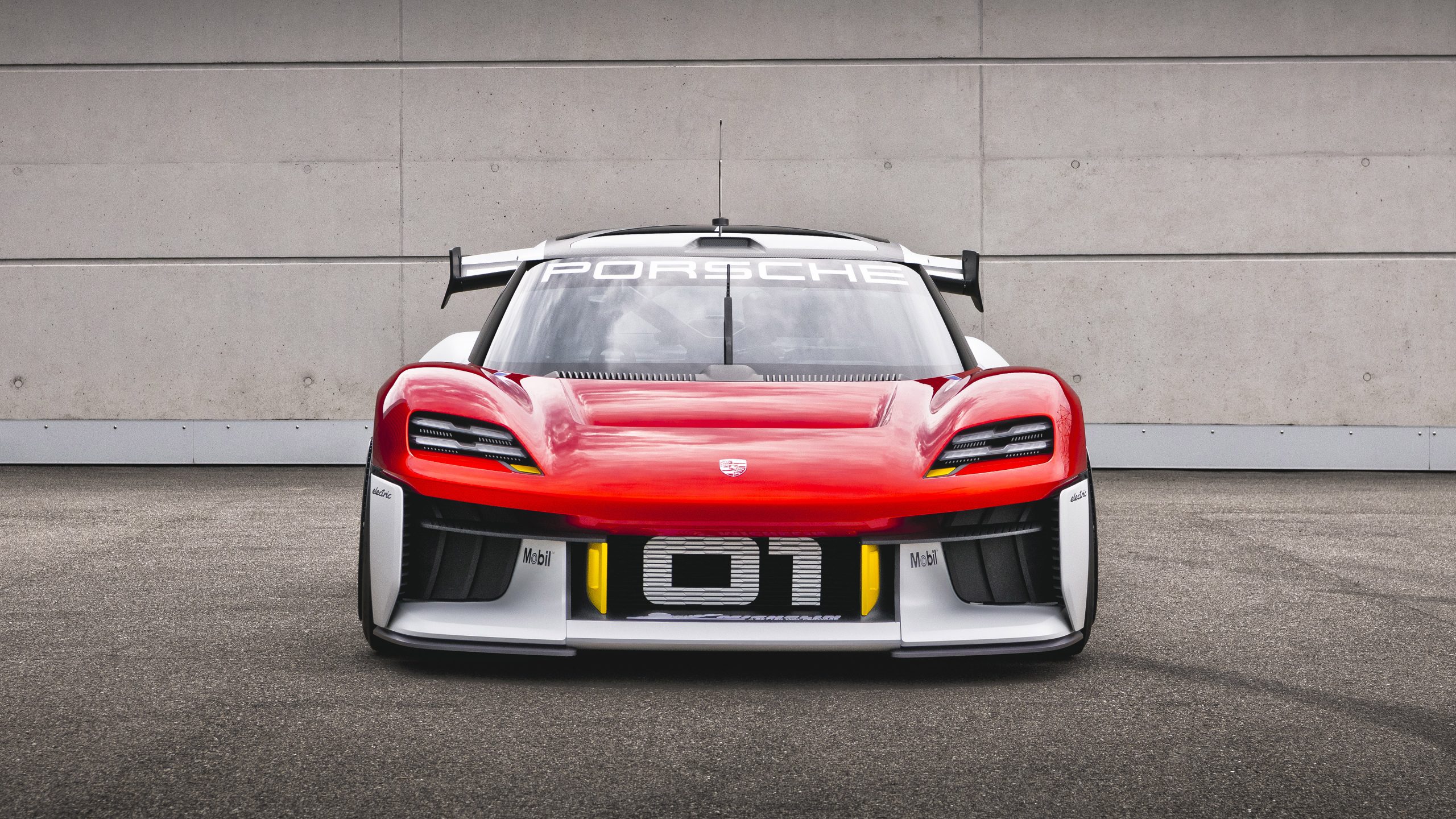
The Mission R Concept also showed just how insanely powerful an electric race car could be, with almost 1,100 HP between two electric motors. It was built to be as light and strong as possible as well, using advances in carbon composites to create a carbon safety cage in place of a traditional steel roll cage. Despite carrying a massive 82 kWh lithium-ion battery, two electric motors, and all the running gear needed for racing, it came in at just under 1,500 kg (3,307 lbs), and paved the way for the next concept car
The Porsche Mission X
June 8, 2023, saw the reveal of the Mission X at the Porsche Museum at Zuffenhausen, to celebrate 75 years of Porsche and 100 years of the 24 Hours Of Le Mans, as a car that was “about to create the future.” While that is some clever marketing language, because it is coming from Porsche, the company that takes anyone saying “That won’t work” and summarily ignoring them, it is also a statement of intent.
While it is most definitely a concept all-electric car, hence the Mission name, do not think for a second that Porsche hasn’t just revealed their next supercar. All you need to do is look back at the history of their supercar releases. First, the Carrera GT Concept was revealed in 2000 to show what a motorsports-derived V10 engine in a supercar would look like, and in 2004 the production car hit the roads. Next, the 918 Concept was revealed at the Geneva Motor Show in 2010, and in 2013 the 918 Spyder was ripping down the Autobahn in the hands of customers that decided to take a “factory delivery” of their new hypercar.
It is very likely that with the concept reveal now in 2023, we will see the successor to the 918, and Porsche’s first entry into the all-electric hypercar field, in 2026 or thereabouts. But for now, the Mission X is here, and we’re going to take a deep-dive into all the important specifications and details.
Overall Design & Aerodynamics
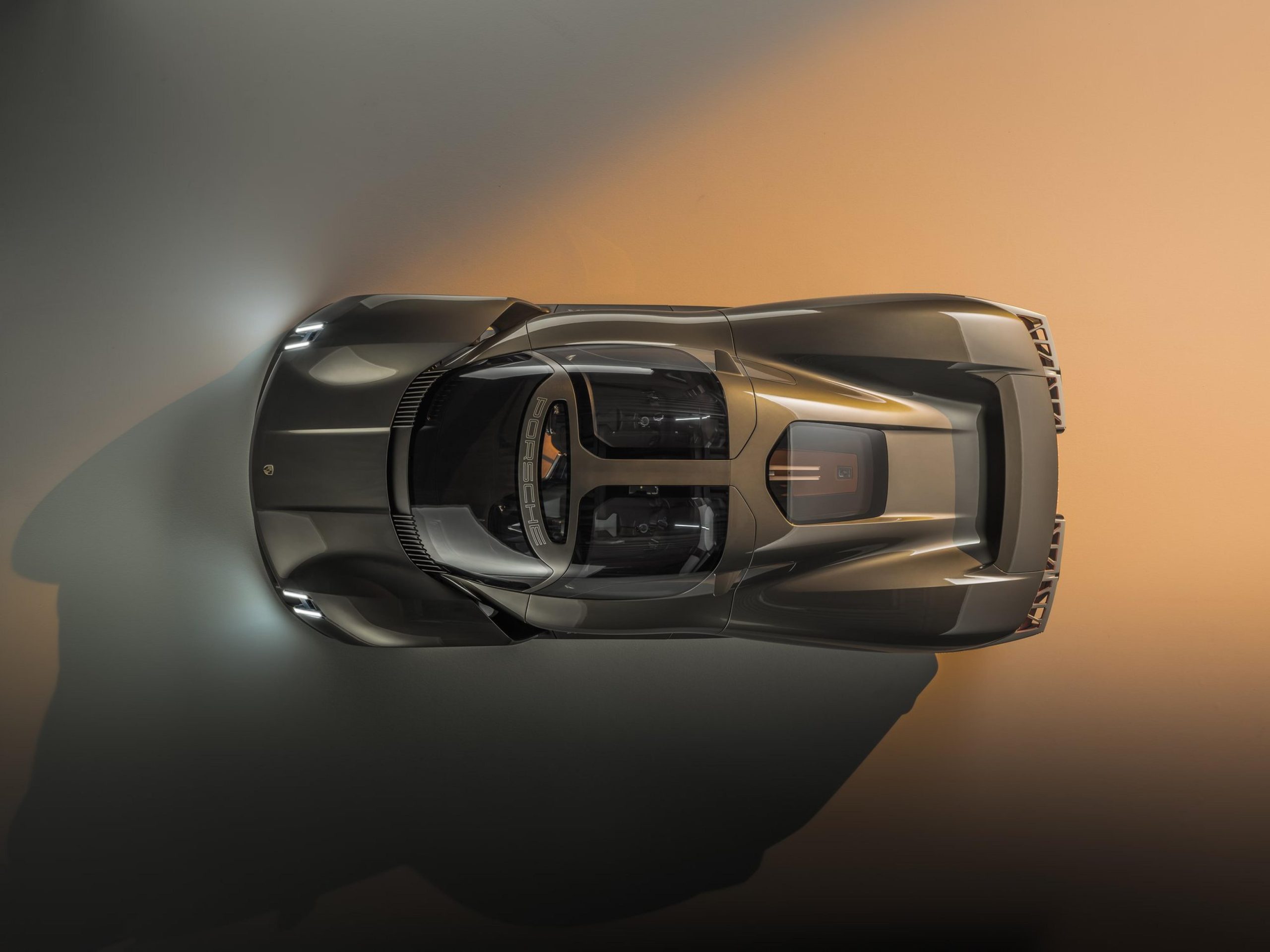
There are so many little details and features of the Mission X’s design that we could write a full article on them alone, but we’ll touch on the major pieces here. The first of these design elements is what Stuttgart has dubbed the “glass dome,” the cockpit of the hypercar that borrows heavily from fighter jets and aerobatic aircraft. This is exemplified in the curved glass of the doors, which is a very tricky thing to do and requires the use of the same kind of glass that is used in fighter jet cockpits. This glass, which is often a polycarbonate material, is extremely strong and resilient, yet extremely lightweight.
It should also be noted that the windscreen of the Mission X is heavily inspired by Porsche’s long history in motorsports. When looking at the car from the side, if you squint, you can see the DNA of cars like the 917 and the 956 in the steeply raked glass, with the Daytona window above the rearview camera screen. As to why it is called a Daytona window, in older racing prototypes that took part in the 24 Hours of Daytona, they carried the same type of window that the driver could look upwards through while on the steeply banked oval section of the track to see further than they could looking just through the windscreen.
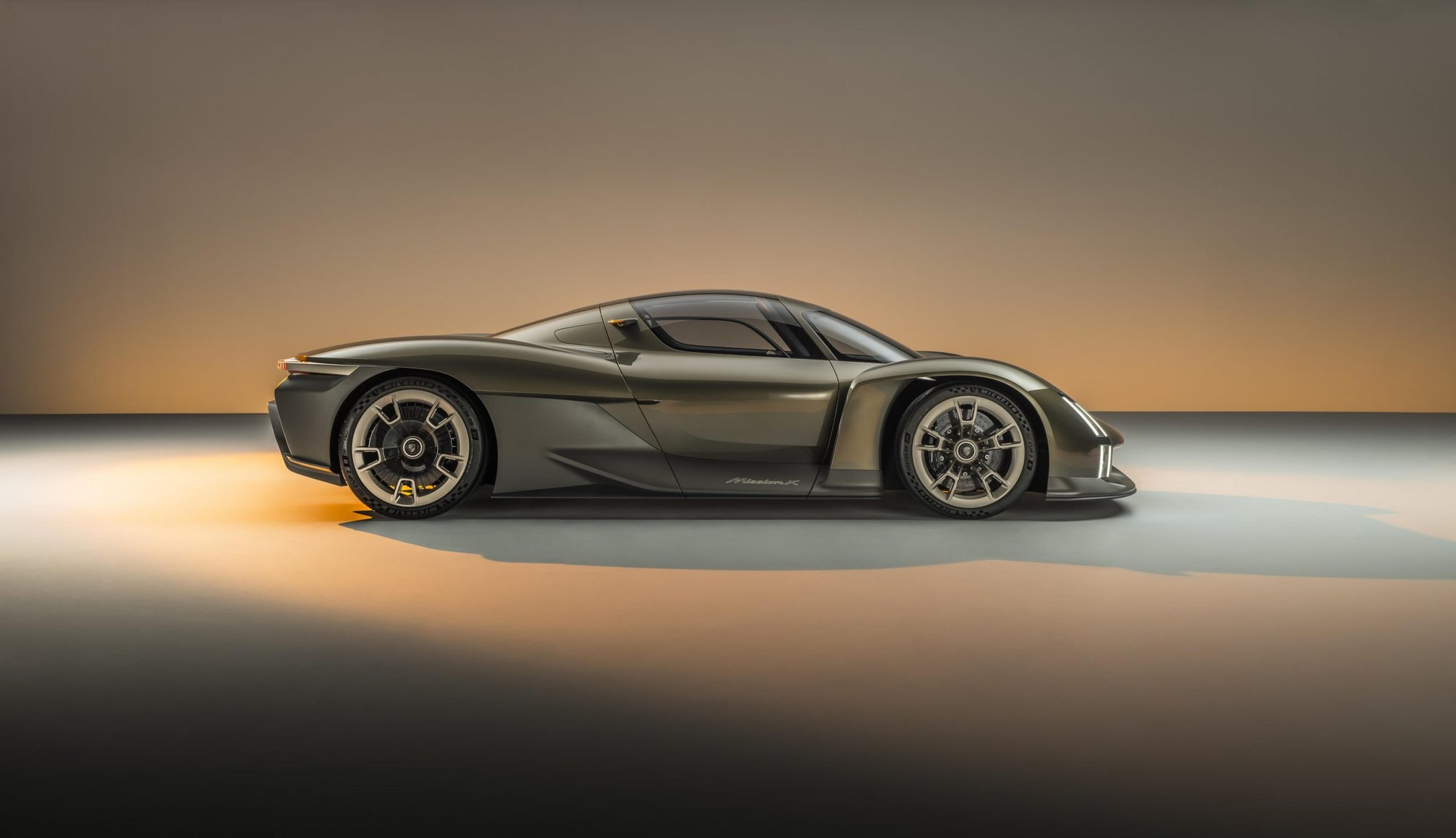
What is surprising about the Mission X, in terms of design, is that while it takes inspiration from half a century of prototype race cars, it doesn’t replicate the size of some of those prototypes. It is, in a word, tiny. At just 4.5 meters (14 feet) long, and 2 meters (6.5 feet) wide, it occupies less road space than a Porsche Taycan. Where it does replicate the prototypes, however, is in its height of just 1.2 meters (3.93 feet).
As many in the racing world know, the mantra of “long and low” is key to creating effective aerodynamics. Porsche, as we all know, has a history in prototype racing, and they bring all of that knowledge to the fore here. Some air is guided under the car via the front splitter and air intakes, which use that air to flow through the radiators of the oil-cooled battery pack before dumping it under the body. That underbody is shaped to create a Venturi effect, with a full dual tunnel diffuser at the rear, sucking the car down onto the road much like modern Formula One cars.
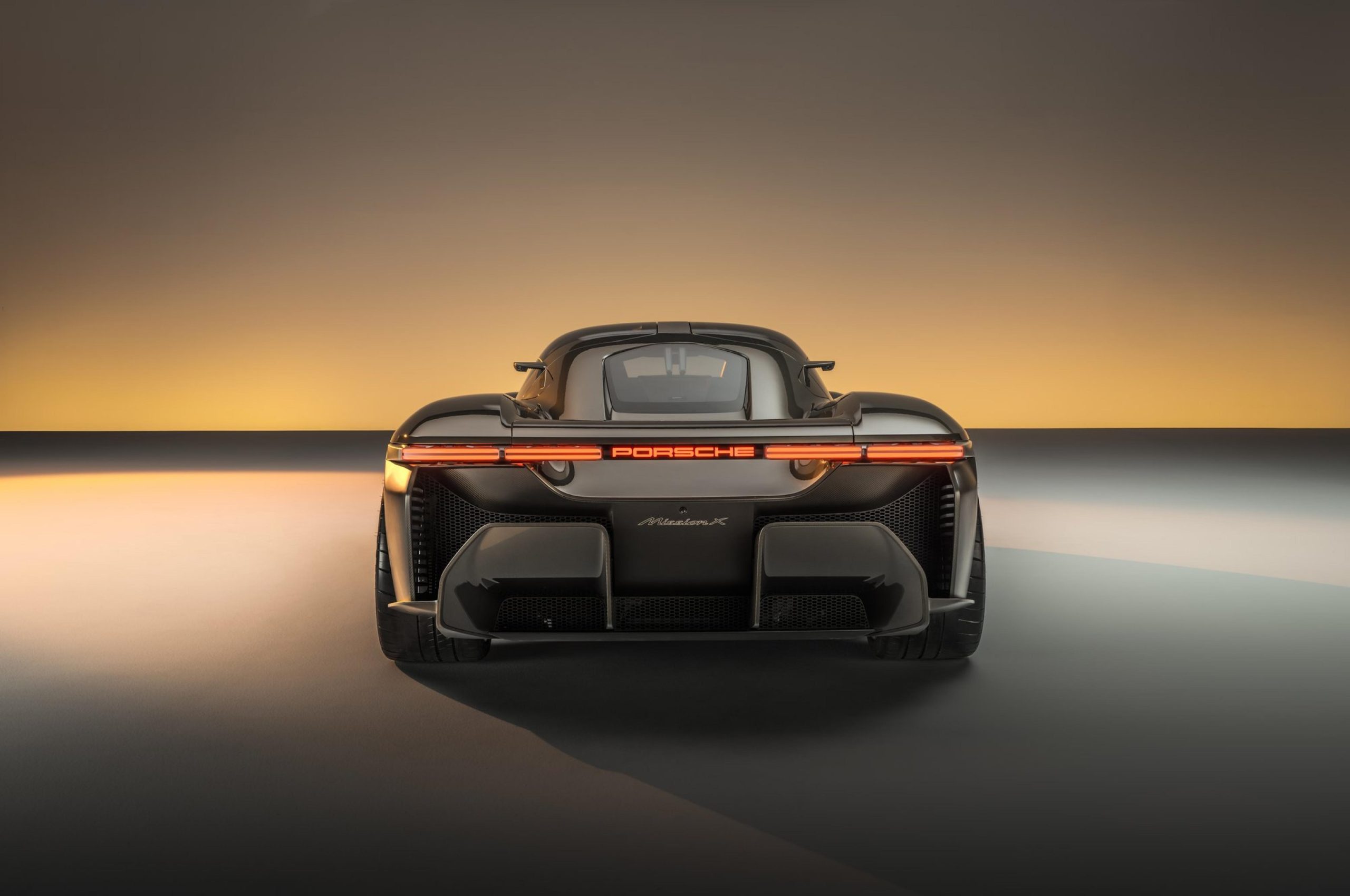
As well, the Mission X has an active wing, which sits above the sculpted rear deck and between the tail light buttresses for the higher pressure air that flows over the body of the car. That scalloped rear deck already sucks the air flowing over the cockpit down and shapes it between the buttresses and under the wing to create downforce. Where things get exciting is that the wing can raise and tilt as determined by the onboard computer to provide optimal downforce at all times. Porsche states, and we have no reason to not believe them, that the Mission X generates nearly twice as much downforce as the Type 992 911 GT3 RS.
Materials
To say that the Mission X is a car of no excesses is not a dramatic statement. Every single surface, support, structural component, and even the paint has been designed to have only what is necessary, without one gram more of material than is absolutely needed. This required an almost obsessive focus on structural integrity, material science, and, oddly, architecture.
When you take a closer look at some parts of the Mission X up close, that architectural inspiration starts to make sense. Think about it in terms of modern bridges, in that there needs to be a structure that can bear immense amounts of dynamic load without failing, yet needs to fit the aesthetic of the city, country, or landscape it is part of.
In the same way, the Mission X has been shaped and designed to bear immense downforce, while also being rigid and strong. A perfect example is the cantilever-style body structure that holds up the tail light buttresses that themselves take the aerodynamic load that the rear wing will apply to them. It’s not a mistake that part of that cantilever style support is also the top of the Venturi tunnel diffuser on each side, with the maximum load being transferred to the central body spar. Another aspect is that the tail lights themselves are LED strips, held out from the body on trusses that create negative space while not affecting rigidity at all.
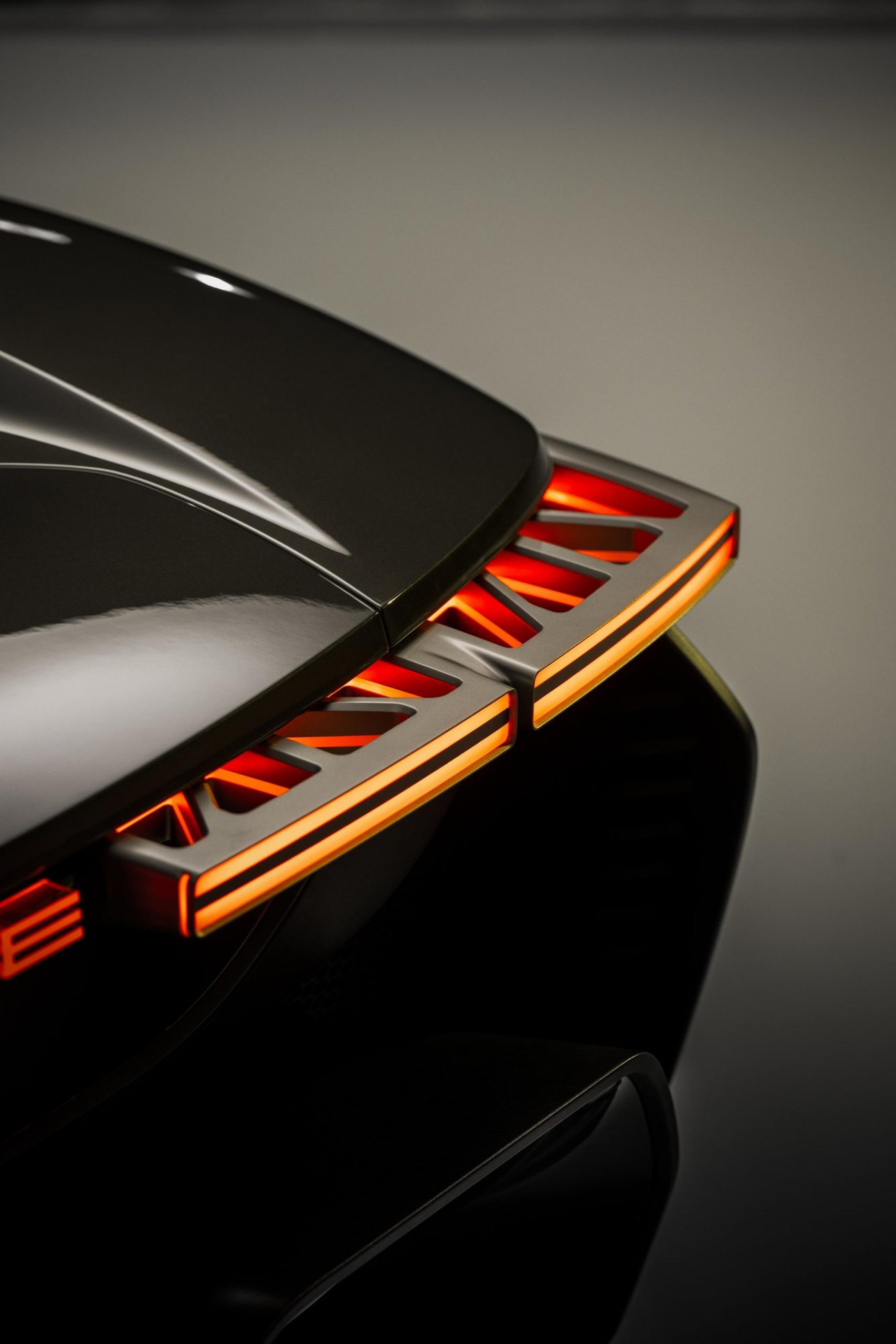
That load is also able to be borne without much issue because of Porsche’s excellence in CFRP (Carbon Fiber Reinforced Polycarbonate) and carbon composites. Using the latest developments from the motorsports division, the entire chassis and monocoque of the Mission X is one continuous structure, which adds extreme amounts of rigidity, both torsional and lateral. The body is then built up around that chassis with ultra-lightweight carbon composite and carbon fiber panels.
The cabin is a powerhouse of CFRP, including the entire dash structure, interior door trim, and even the seats themselves. No so much seats as CFRP shells with some padding on them, they are nonetheless fitted with customized padding and upholstery, with six-point racing harnesses mounted and an LED strip down the centerline for cabin lighting instead of a traditional overhead lamp. Those seats are also differentiated with the driver’s seat upper area finished in light grey, and the passenger seat finished in tan brown.
Technology & Battery System
Continuing on for the moment with the interior, Porsche has instituted what they are calling a “floating display” in place of a traditional dash. A wide, curved TFT shows only the important details a driver needs to remain focused on the act of driving, including speed, remaining range, and navigation. A separate display, inlaid into the console area and tilted towards the driver, acts as both the infotainment system in regular use, and tire pressure/motor temperature readout per corner of the car in track mode.
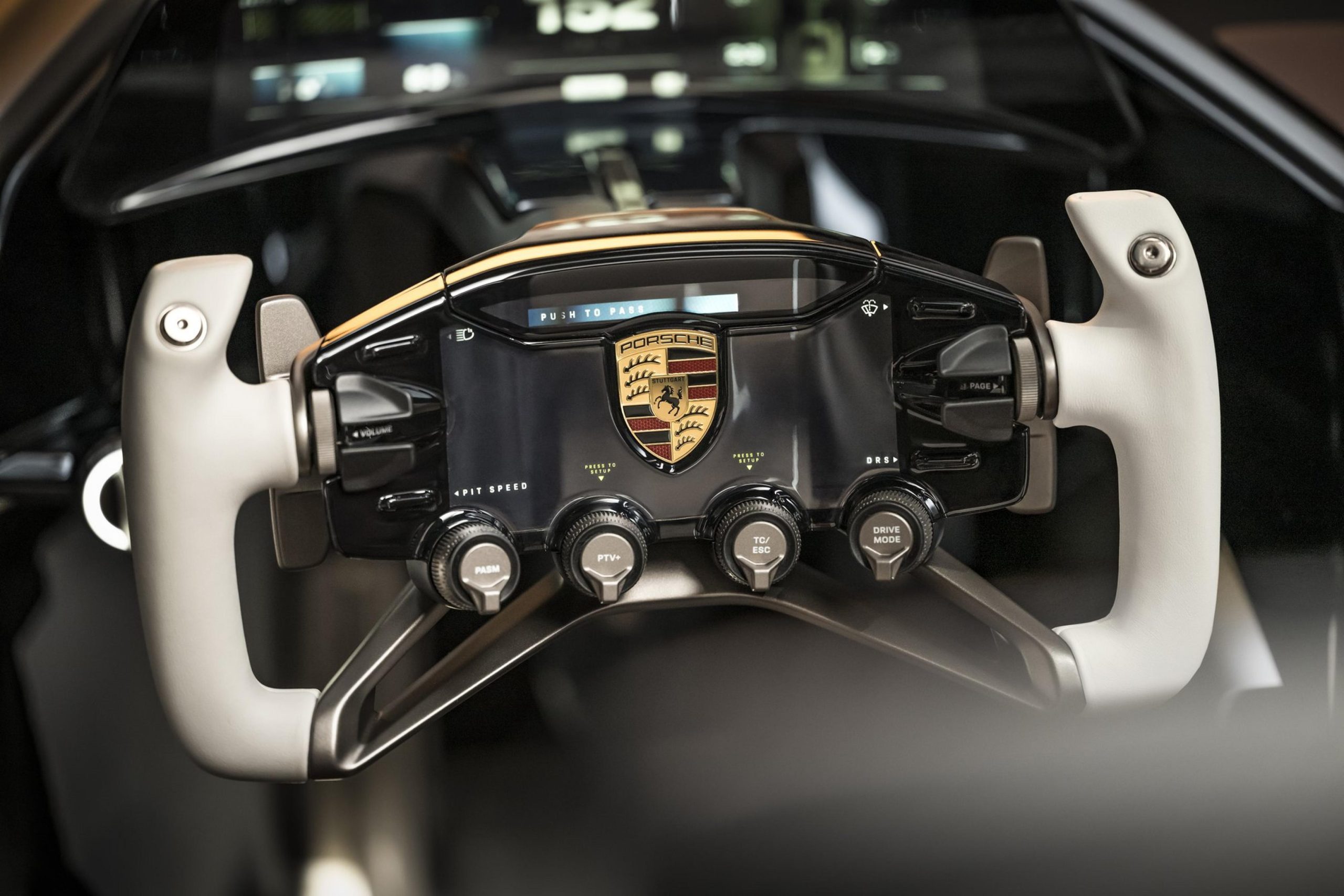
The steering is done via a racing yoke system, much like in Porsche’s 911 GT3 R race car. A small TFT readout is across the top of the yoke, with driver selection dials along the bottom, including selectable levels of PASM, PTV+, TC, and what drive mode you want to be in. The entire yoke is also made out of CRFP and lightweight aluminum, wrapped in grippy leather. In pursuit of lightness as well, as mentioned before that if it isn’t needed, it isn’t included, the steering column is exposed after the column support, and can be seen going under the floating display.
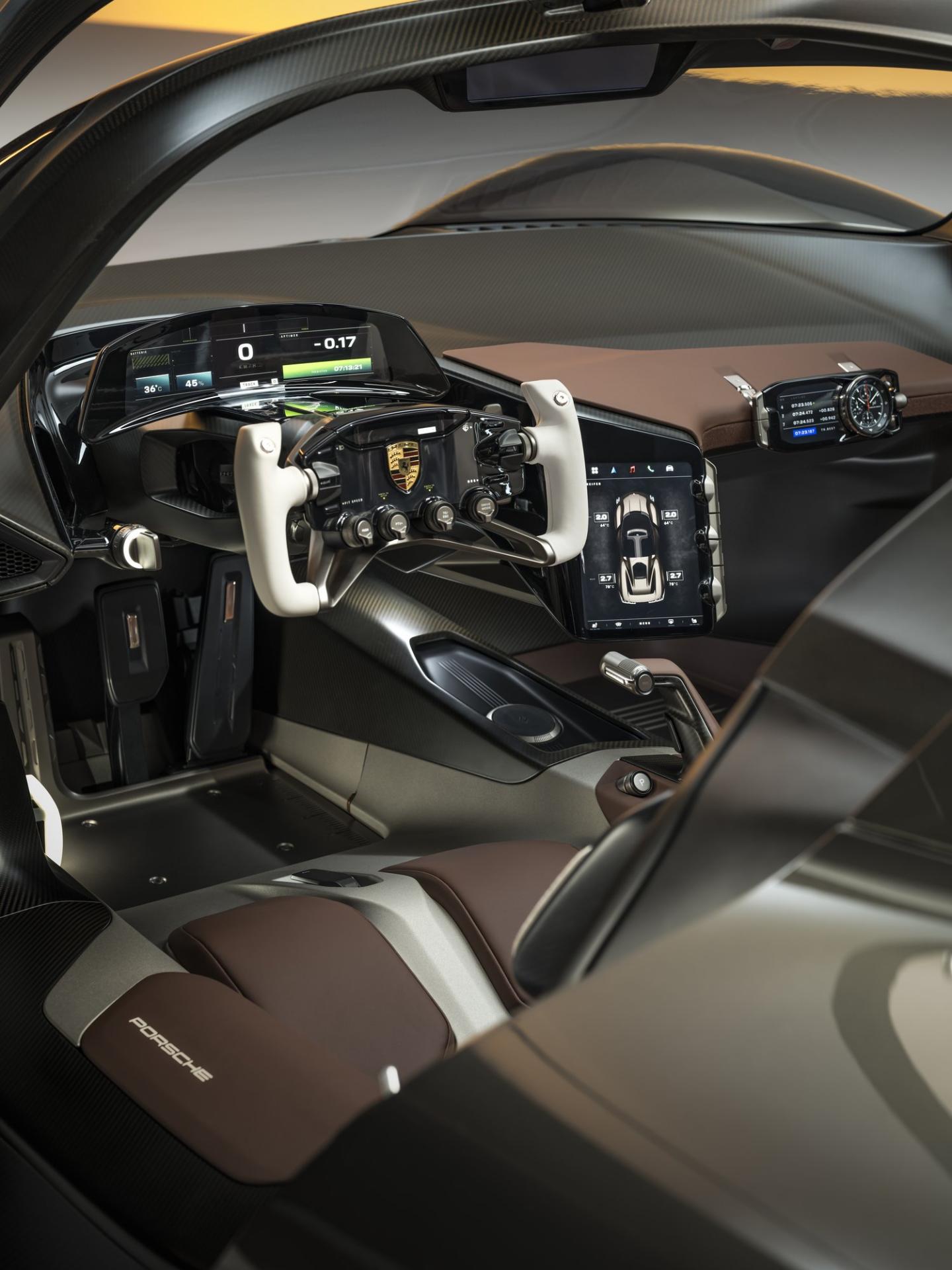
Of course, this being a concept car to demonstrate Porsche’s latest tech, including a revolution in its internal electrical network. Its battery pack, or more appropriately battery stack, is located where the engine would be in a mid-mounted position directly behind the cockpit, which can be seen through the small rear window. While that is not a new idea, the fact that the battery and the four electric motors that drive the Mission X are connected via a 900V network is.
To date, the most powerful electric cars, including rival hypercars like the Lotus Evija and the Rimac Nevara, operate on an 800V internal network. The Porsche Taycan, from the lowest base model to the Turbo S, also operates on an 800V network. These cars have that network because it won’t be overloaded when an instant demand for power is requested via the driver’s right foot, as well as allowing for very fast charging at high voltage, high flow supercharging stations. The Mission X, however, has taken it a step up and operates on a 900V internal network.
While 100V doesn’t sound like that much in the grand scheme of things, one must take into consideration that voltage is exponential, not linear. That means that the MIssion X, if you can find a charge station powerful enough, will recharge at twice the speed of the already fast-charging Taycan. The Mission X’s 900V system is so advanced, in fact, that the only charging stations in the world that can take full advantage of it are the ones used for Formula E race cars.
Motors & Power-To-Weight Philosophy
As mentioned, the Mission X, like most electric hypercars, uses a per-wheel motor system. These four electric motors, evolutions of the ones used in the 918 and the Taycan, are so new that no specifications exist for them yet, at least publicly. What is known, however, is that they are capable of no less than 375 PS (370 HP) each, which at bare minimum gives the Mission X 1,500 PS (about 1,480 HP).
This is an important number as while Porsche have not revealed the weight of the Mission X, they have stated that it does achieve a 1:1 power-to-weight ratio, in terms of PS per kilogram. Based on that, the Mission X is very likely to weigh in at a scant 1,500 kg (3,307 lbs), and very roughly translated, that comes out to about 2.2 lbs per HP.
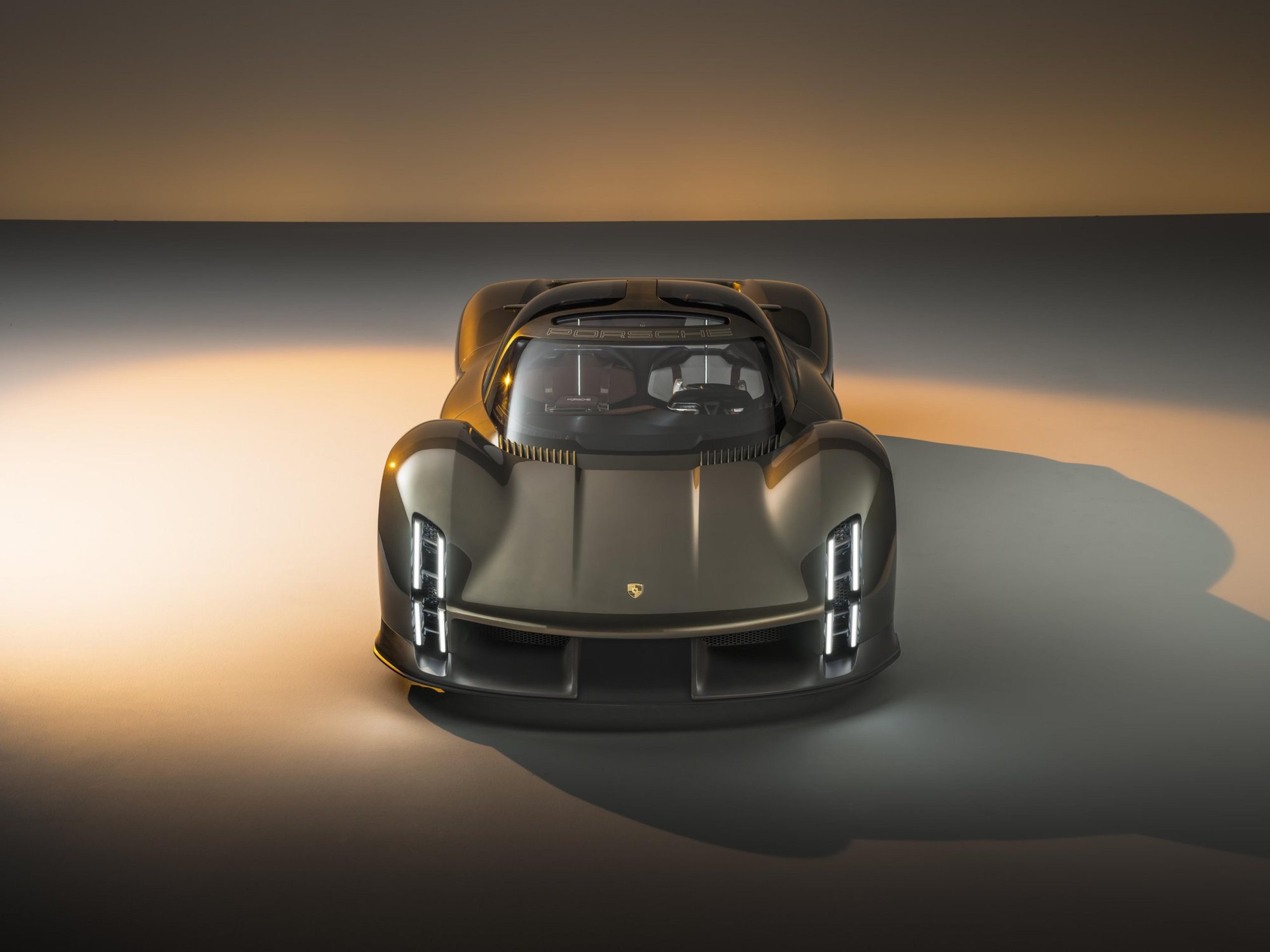
While this does make the Mission X much less powerful than opponents like the Rimac Nevara and Lotus Evija, both of which have close to 2,000 HP, the key difference is that the Mission X is lighter. Much lighter. Via the design philosophy of absolutely no extraneous grams of weight anywhere, the Mission X is a scarcely believable 30% lighter than the Nevara, and 25% lighter than the Evija. For the Lotus, you also have to remember that it has two huge gaping venturi tunnels, effectively negative space where no materials are, and the Mission X is 25% lighter than that car.
In simpler terms, the Mission X is going to be hilariously, insanely, extremely fast, and that is exactly as Porsche intended. The core statement about the Mission X is to not only wipe the smirk off the face of other hypercar makers, but to also be the fastest street legal thing to go around the Nurburgring Nordschleife. That record, 6:35.18, is currently held by the Mercedes-AMG One, which is effectively a Formula One car with an extra seat and a few bits of extra bodywork.
It is very likely that the Mission X will achieve its stated goal, as the AMG One produces 1,080 HP and weighs 1,695 kg (3,737 lbs). A key similarity is that both of the cars make use of ground effects downforce, so if there ever was a fair fight, this is it.
Aesthetics
Separate from the entire discussion about design are the new aesthetics brought about by the Mission X’s reveal. The most prominent of these is that this hypercar concept is the proud flagbearer of the newly revamped Porsche Shield Crest logo.
The new crest keeps the same overall design that we all know and love, and at a glance looks similar. When you inspect it closer, however, you will see that the gold metal behind the Porsche lettering has a brushed look to it, the entire logo seems to pop out in 3D with a honeycomb structure, and the stallion in the center is much crisper and more defined, as well as its backdrop seeming to pop out on top of the 3D honeycomb.
The next most prominent aesthetic choice are the vertically stacked headlights. The lower running lights show inspiration from the 906 and 908 race cars, although with two lighting elements instead of one big light. The upper headlights are inspired by the vertical stack of lights from the 919 LMP1 Hybrid race car, at the very front edge of the car and seeming to make the front of the Mission X surge forward even when standing still. The turn signals are integrated into horizontal supports between each LED light element, and the effect of the indicators make it look like an eye opening towards the direction of the turn.
The Mission X also has a new style of rear-body lettering. While the font is the familiar Porsche style, the letters are individually backlit with LEDs, in effect making the logo part of the brake lights on the rear of the car. The illuminated logo also has a fun party trick, in that while the Mission X is charging, the E in Porsche will pulse as the car is “Energizing.” When it stops pulsing, the battery has been fully recharged.
It’s a small detail, but as this deep dive has proven, Porsche excels at the small details. Those small details allow for the Mission X to be an ultra-lightweight, ultra-fast hypercar concept, and while the marketing all refers to the fact that the Mission X “might” be built, with their track record of concept-to-production supercars and hypercars, we honestly read that as “will” be built.


